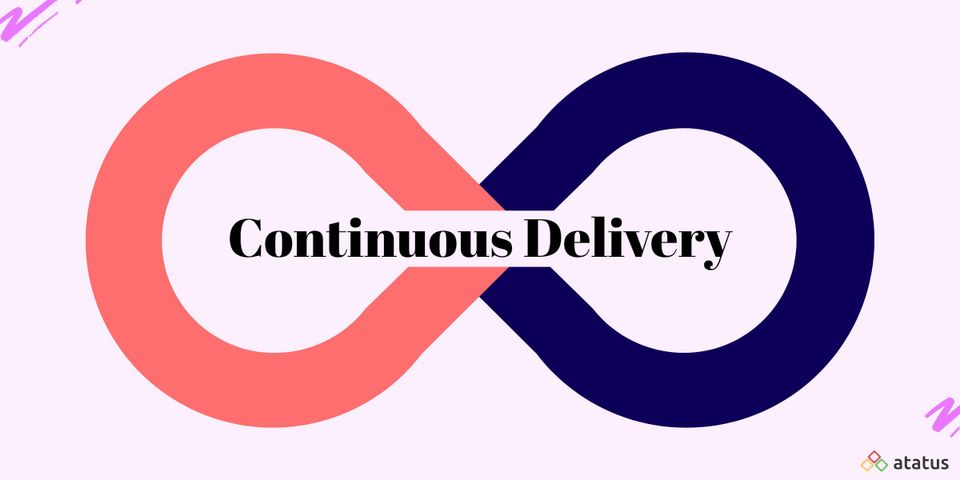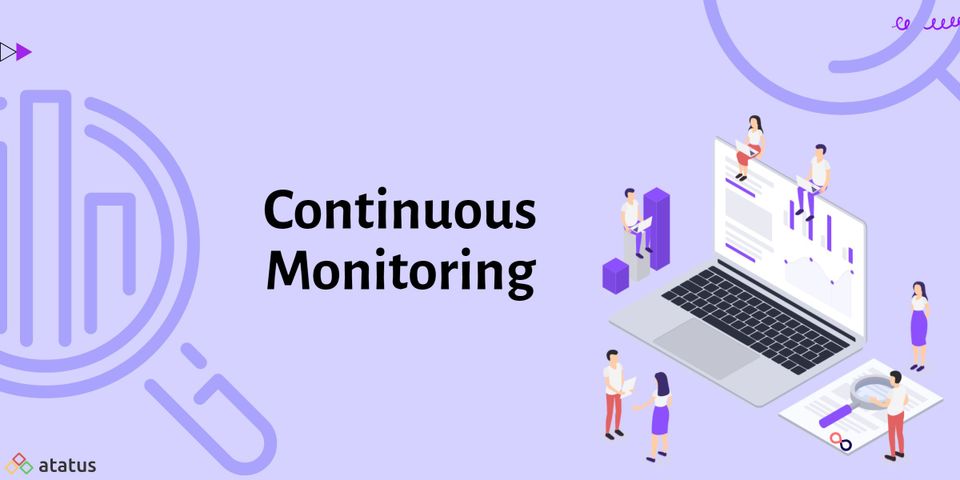The goal of continuous delivery is to automate the entire software development process. Continuous delivery is a key part of a DevOps strategy because it creates a pipeline for developers to produce and commit tiny chunks of distributable code to test environments for rapid and automated testing.
Dev teams can quickly assess whether portions of code meet quality criteria for release by using automated tests to determine functionality, performance, and security. This process allows developers to provide software updates to customers in a secure, timely, and long-lasting manner.
We will go over the following:
- What is Continuous Delivery?
- Why Continuous Delivery is Important?
- Benefits of Continuous Delivery
- Principles of Continuous Delivery
- Challenges in Continuous Delivery
What is Continuous Delivery?
Continuous Delivery is a software delivery technique in which development teams write and test code in short but continuous cycles, typically with high levels of automation, in order to improve software quality. By promoting more incremental changes rather than investing a substantial amount of time on a comprehensive overhaul of a product, this technique allows development teams to build, test, and release software more quickly.
Continuous delivery is a popular software delivery method, particularly among DevOps teams. It's usually used with continuous integration (CI) to build a CI/CD pipeline, which is a series of processes for software development, deployment, and feedback loops.
Code is supplied to user acceptance testing or a staging environment on a regular basis in continuous delivery. To avoid unforeseen performance issues in production, all aspects of the code are tested. Any component that passes the automated tests is considered a release candidate.
Continuous delivery prompts a final human check and then a push to deployment at this point. Alternatively, the build can be deployed automatically, which is known as continuous deployment.
Why Continuous Delivery is Important?
It's a common misconception that in order to deploy software more regularly, we have to accept lesser levels of system stability and reliability. This isn't true. In reality, peer-reviewed research reveals that high-performing teams routinely execute services faster and more consistently than their low-performing counterparts.
Even in highly regulated industries like financial services and the government, this is true. Organizations who are willing to put in the effort to develop this competence will gain a significant competitive edge.
Benefits of Continuous Delivery
The practices at the heart of continuous delivery assist us in achieving a number of significant advantages:
- Cost-cutting
Over the course of its life, any successful software product or service will evolve dramatically. We lower the cost of generating and delivering incremental software changes by eliminating many of the fixed costs associated with the release process by investing in build, test, deployment, and environment automation. - Low-risk Releases
Continuous delivery's main purpose is to make software deployments easy, low-risk events that may be conducted on-demand at any time. It's relatively simple to make zero-downtime installations that are unnoticeable to users by using patterns like blue-green deployments. - High Quality
Developers may focus their efforts on user research and higher-level testing tasks like exploratory testing, usability testing, and performance and security testing when they have automated tools that detect regressions in minutes. These operations can be carried out continually throughout the delivery process by establishing a deployment pipeline, ensuring that quality is incorporated into products and services from the start. - Faster Time to Market
The integration and test/fix phases of a standard phased software delivery lifecycle might take weeks or even months to complete. Developers may incorporate integration and regression testing into their daily work and fully eliminate these phases when teams collaborate to automate the build and deployment, environment provisioning, and regression testing procedures. We also avoid the significant quantities of rework that a staged approach entails. - Better Product
Working in small batches becomes more cost-effective due to continuous delivery. This implies we can collect user input on working software throughout the delivery lifetime. A/B testing, for example, allows us to take a hypothesis-driven approach to product development by allowing us to test concepts with users before building out entire features. - Happier Teams
Continuous delivery, according to peer-reviewed research, makes releases less painful and minimizes team fatigue. However, by releasing more regularly, software delivery teams may more actively connect with users, learn which ideas work and which don't and experience first-hand the results of their efforts. We can focus on what we care about most—continuously delighting our users—by eliminating the low-value, uncomfortable activities associated with software delivery.
Principles of Continuous Delivery
Continuous delivery encourages the use of an automated deployment process to consistently and quickly push software into production. Its purpose is to create an optimal end-to-end process, improve development to production cycles, reduce the risk of release issues, and shorten time to market. In the book "Continuous Delivery," Jez Humble and Dave Farley define the eight principles of continuous delivery as follows:
- Repeatable Reliable Process
In all environments, use the same release process. When a feature or enhancement has to go through two processes to get into the integration environment and then another step to get into QA, problems are bound to arise. - Automate
Builds, testing, releases, configuration changes, and everything else can be automated. Manual methods are inherently less reproducible, error-prone, and time-consuming. When you automate a process, it takes less work to run it and track its progress, and it ensures that you obtain consistent results. - Version Control
Code, configuration, scripts, databases, documentation - Everything! That provides a solid basis on which to build your procedures. - Deal with the Pain First
Deal with the most difficult issues first. Tasks that take a long time or are prone to errors should be completed as quickly as possible. The rest will most likely be easy to perfect once you've dealt with the uncomfortable difficulties. - Build-in Quality
To deal with defects as soon as they appear, develop short feedback loops. Developers will be able to write higher quality code faster if issues are looped back to them as soon as post-build tests fail. Furthermore, fewer difficulties will be discovered later in the process, when repairs would be more costly. - "Done" Means Released
Only when a feature is in production is it completed. Having a clear definition of "done" from the beginning will help everyone communicate more effectively and appreciate the value of each feature. - Everyone is Responsible
It's never a good reason to say, "It works on my station." The responsibility should extend all the way to the manufacturing process. Cultural change is often the most difficult to execute. Having managerial support and an ardent champion, on the other hand, will undoubtedly help. - Continuous Improvement
Automation is the ultimate expression of a practice-making-perfect iterative process if "practice makes perfect." Culture isn't going to work. You must have a culture that is dedicated to constant improvement. Moving past the motive, automation is frequently the most accessible and effective means of achieving that goal.
Challenges in Continuous Delivery
Continuous Delivery does, however, provide a number of issues. Testing, managing scripts, and ensuring security are just a few of the issues.
- Continuous Testing
It's not easy to strike a balance between quality and delivery. When a team is limited on time or resources, many new features or code updates may get untested. Testing and verification capabilities are essential for Continuous Delivery. Automated tests, especially when done in production-like conditions, can be useful in measuring and analysing performance. - Scripts
A script file is a collection of commands. Scripts are great for quickly automating activities, but they don't necessarily scale or make Continuous Delivery pipelines easier to manage. Scripting your pipeline can lead to problems with setup, tribal knowledge that can't be shared with other teams, and brittle pipelines that break and are hard to modify. - Security
Everyone is responsible for their own safety. When the continuous delivery solution does not provide key management solutions out of the box, building CI/CD pipeline implementations that ensure a level of security might be difficult. In a CI/CD pipeline, governance and compliance are one step in ensuring service security.
Conclusion
Continuous Delivery enhances software testing and release processes, allowing development teams to ship software upgrades more quickly. Developers can swap components of larger applications without fear of introducing new defects, breaking the build, or causing version control issues by shifting testing early in the process and working with bite-sized portions of code.
Monitor Your Entire Application with Atatus
Atatus provides a set of performance measurement tools to monitor and improve the performance of your frontend, backends, logs and infrastructure applications in real-time. Our platform can capture millions of performance data points from your applications, allowing you to quickly resolve issues and ensure digital customer experiences.

Atatus can be beneficial to your business, which provides a comprehensive view of your application, including how it works, where performance bottlenecks exist, which users are most impacted, and which errors break your code for your frontend, backend, and infrastructure.





